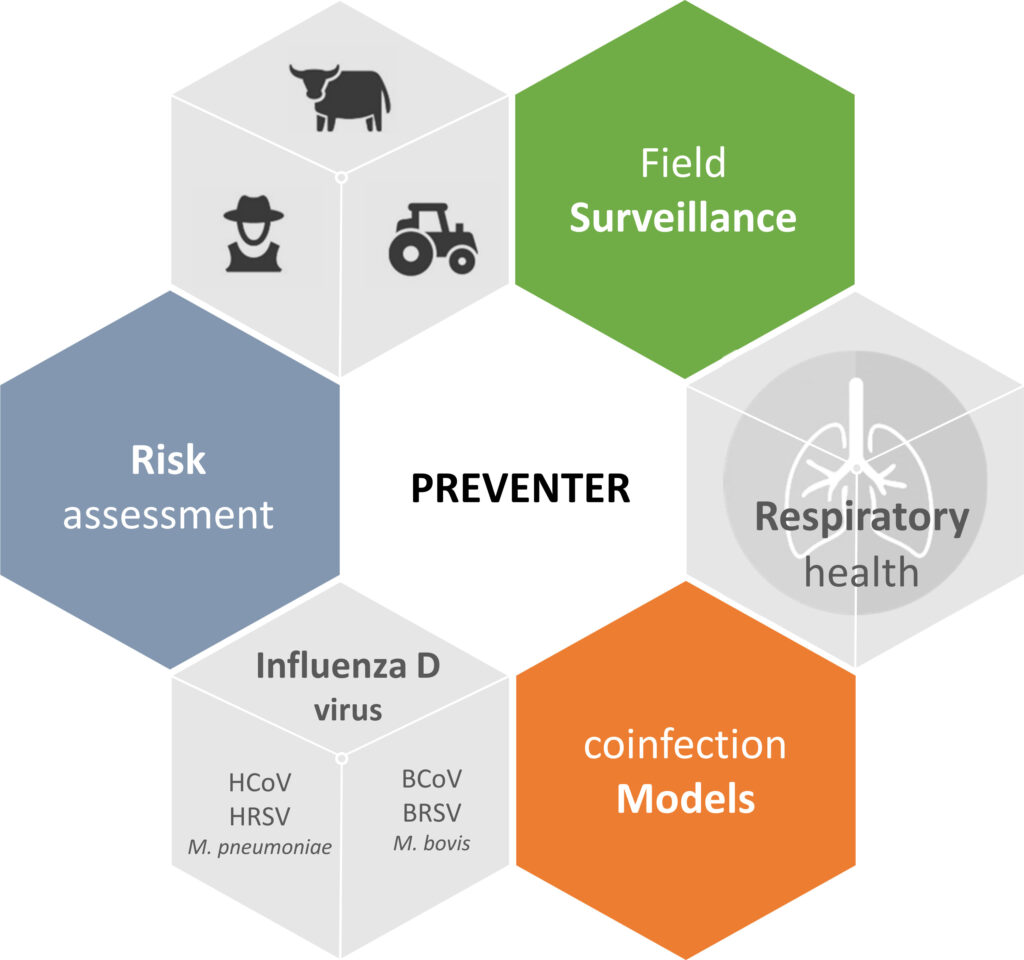
Recent studies in the USA, Asia, and Europe have identified a new genus of the Orthomyxoviridae family, named Influenza D virus (IDV). This novel virus was shown to infect farm animals including swine and cattle, and to efficiently replicate and transmit in ferrets, the animal model of choice for the study of influenza A virus (IAV) to humans.
Our objective is to develop an integrated approach to assess: (i) the emergence threat associated with influenza D viruses circulating in Europe, (ii) the role played by the virus in cattle respiratory disease complex, and (iii) the risk it may play for human.
We will first survey IDV occurrence and prevalence in cattle and Human in Europe and collect field data (samples but also questionnaires on biosecurity and mitigation measures) to understand IDV’s place within its pathogens counterparts. We will however not be able to understand the sequence of infection (which pathogen is more likely to infect first/second), nor whether the co-circulating pathogens act in synergy or antagonism in the host thanks to this field data. In vitro and ex vivo culture methods will then be used to better understand these aspects and come closer to the field situation.
The data generated will be used to build models for risk assessment. Indeed, to estimate the IDV human risk exposure through aerosols in cattle farms at risk (viral circulation), a quantitative risk assessment modelling will be performed and refined using field and experimental data. Based on prospective scenarios analysis, the effect of medical (vaccination) and/or sanitary (biosecurity) mitigation measures will be evaluated through the previous modelling.